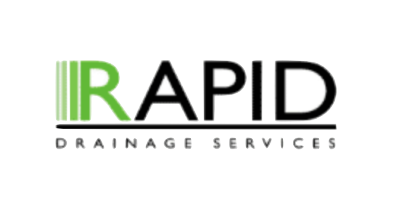The Cost Of Ignoring Your Drain Problems
The Cost Of Ignoring Your Drain Problems
There’s a special kind of denial that comes with homeownership. You hear a gurgle from the sink, smell something unpleasant in the bathroom, or notice water draining a little slower than usual, and you think, “It’ll sort itself out.”
Spoiler alert: it won’t.
Ignoring drain problems is like ignoring a toothache, because the longer you leave it, the worse (and more expensive) it gets. What starts as a minor annoyance can quickly snowball into a plumbing nightmare, complete with unpleasant odours, damp patches, and invoices that make you wish you’d acted sooner.
Let’s take a look at what really happens when you pretend your drains are fine, and why it’s always cheaper and smarter to tackle problems early.
The Slow Drain That Never Stops “Thinking About It”
You know the one. The sink that takes forever to empty, the shower that becomes an impromptu foot bath, or the kitchen drain that burps like it’s alive. These are the early warning signs your drains are starting to clog.
At first, it’s just a bit of grease or a few stray hair strands, but over time debris builds up, forming what plumbers affectionately call a “drain monster.” Once that mass takes hold, water flow slows to a trickle, smells start to rise, and suddenly you’re dealing with something much nastier than a slow drain.
A simple clean-out now might cost you next to nothing. Leave it six months, and you could be paying for emergency jetting or even pipe replacement.
The Hidden Pressure Cooker in Your Pipes
When you ignore a blockage, you’re not just risking slow drainage, you’re building pressure. Literally.
Trapped water pushes against your pipes, straining seals and joints until one day, something gives. A small crack can become a leak, and that leak can turn into a full-blown burst. Once that happens, you’re not just dealing with a plumbing problem; you’re dealing with structural damage.
Water can seep into walls, ceilings, and floors, causing rot, warping, and mould. Even worse, leaks hidden behind walls can go unnoticed for months, quietly eroding your home while your water bill creeps higher.
Replacing one pipe might cost a few hundred pounds. Replacing a section of ceiling, flooring, and electrics? You’re suddenly in four-figure territory.

Mould: The Uninvited Guest That Never Leaves
When your drains leak or overflow, the moisture they release doesn’t just disappear… it lingers. And mould loves a bit of lingering moisture.
Once it starts spreading, mould doesn’t just make your home smell musty — it can trigger allergies, asthma, and respiratory problems. You might notice black patches creeping across your walls or behind furniture, or you might not see it at all until it’s too late.
And here’s the kicker: mould removal is not a one-wipe job. Proper remediation can cost thousands and requires specialised treatment to stop it returning.
If that doesn’t convince you to fix your drains now, remember, you can Febreze the smell of blocked pipes, but you can’t out-spray a fungus.
Sewage Backups: The Absolute Worst-Case Scenario
There are few words more terrifying to homeowners than “sewage backup.” It’s the plumbing equivalent of a horror movie, starring you, a mop, and something that definitely didn’t belong in your bathtub.
Neglected blockages or broken pipes can lead to wastewater reversing course and coming back up through your sinks, toilets, or shower drains. It’s as disgusting as it sounds, and it’s dangerous too.
Sewage water carries bacteria, viruses, and contaminants that can pose serious health risks. Cleaning it up isn’t just a matter of bleach and rubber gloves; it often requires full professional decontamination.
Ignoring a slow drain might save you a few quid today, but if it leads to a backup, you’re looking at potentially thousands in clean-up and restoration costs.
The Environmental Fallout
Ignoring drain problems doesn’t just hurt your wallet, it hurts the planet, too.
Leaking drains waste enormous amounts of water, putting unnecessary pressure on already limited water resources. And when those leaks carry sewage, grease, or chemicals into soil or waterways, the environmental impact can be devastating.
Polluted water can harm wildlife, contaminate local rivers, and even make its way into groundwater supplies. What might seem like a small household issue can quickly become part of a much larger environmental problem.
Fixing a leak now helps protect your home and the planet. Win-win.
The Real Cost of Doing Nothing
Let’s do some quick maths.
A basic professional drain cleaning: around £100-£150.
Repairing a small leak: maybe £250.
Replacing a collapsed drain section: £1,000-£3,000.
Repairing water damage after a burst pipe: £5,000 and up.
In short, the longer you wait, the higher the price tag climbs. And it’s not just financial. You’re risking your property’s safety, your family’s health, and your own sanity in the process.
So next time you hear that faint gurgle or catch a whiff of something suspicious, don’t shrug it off. Treat your drains like you would your car – regular maintenance, quick repairs, and a bit of professional help when needed.
Prevention Pays… Literally
At Rapid Drainage, we believe prevention is the best investment you can make in your home. Our professional drain inspections, high-pressure jetting, and CCTV surveys spot problems early, before they become catastrophic.
Whether it’s a minor blockage, a sneaky leak, or a full-blown drainage disaster, we’re here to fix it fast, cleanly, and affordably.
Ignoring your drains won’t make them behave. But giving them a little attention now? That’ll save you thousands later — and keep your home dry, healthy, and smell-free.
📞 Call Rapid Drainage today or visit https://rdrainage.co.uk/contact-us/
Because the only thing worse than a blocked drain is wishing you’d fixed it sooner.


